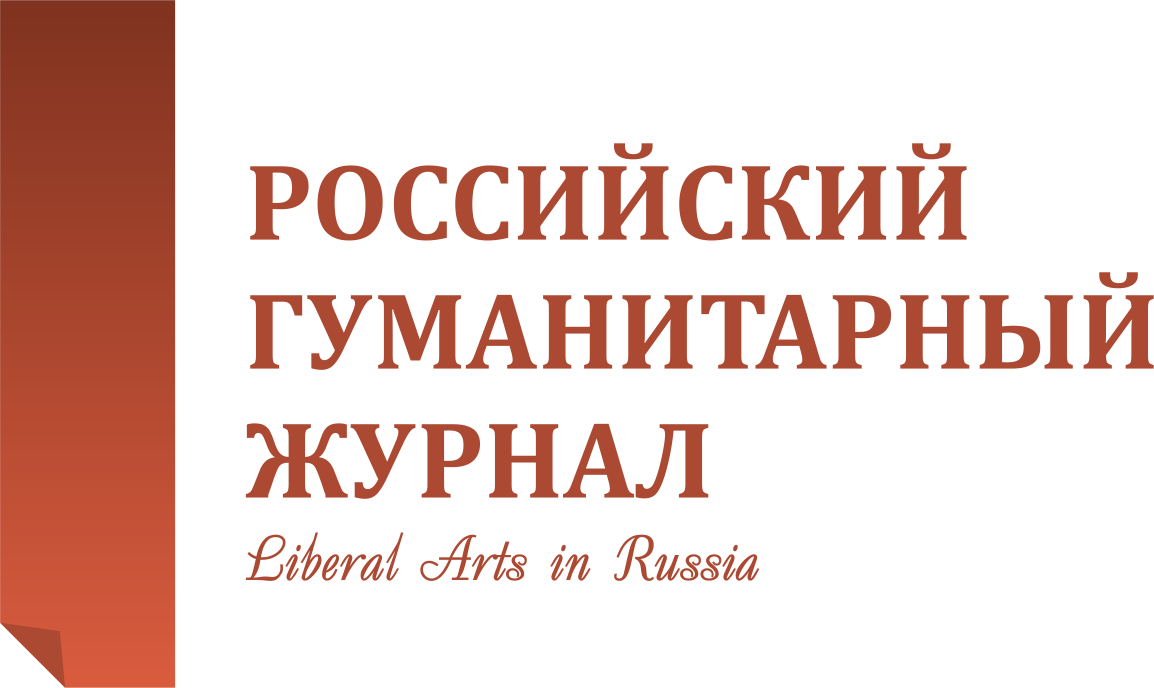Культура и креативность: региональная специфика в стратегии развития
Российский гуманитарный журнал. 2019. Том 8. №1. С. 40-57.
Скачать полный текст (Русский) Email: oskarnauhova@sfedu.ruРезюме
В обществе, основанном на знаниях, экономический рост зависит от реализации новых идей. Творческие люди, творческие отрасли и творческая экономика считаются важнейшими факторами экономического процветания и управления изменениями. В статье анализируется культурная специфика в поддержке креативности при реализации стратегии социально-экономического развития. Сравнительный анализ World Value Survey Р. Инглхардта, данных Global Entrepreneurship Monitor и Entrepreneurship Eurobarometer G20 позволяет установить региональные различия Европы и России в культурных практиках в процессе принятия решений. Это может служить основой для дальнейшего кросс-культурного исследования столкновений между глобальными экономическими системами, требованиями к креативности и инновациям, внутренними институциональными и социальными ресурсами для поддержки / отказа от инноваций и культурно поддерживаемых поведенческих моделей молодых исследователей, интеллектуалов и предпринимателей, определяемых в качестве драйверов новой экономики.
Ключевые слова
- • экономическая культура
- • экономика знаний
- • креативность
- • стратегия развития
- • принятие решений
- • инновации
- • поведенческие паттерны
- • предпринимательство
- • Г. Хофстеде
- • Р. Инглхардт
- • culture of economy
- • knowledge economy
- • creativity
- • strategy of development
- • decision-making
- • innovation
- • behavior pattern
- • entrepreneurship
- • G. Hofstede
- • R. Inglhardt
Литература
- Aldrich H., Reese P. R., Dubini P. Women on the verge of a breakthrough: Networking between entrepreneurs in United States and Italy // Entrepreneurship and Regional Development. 1989. Vol. 1. No. 4. Pp. 339-356. https://doi.org/10.1080/08985628900000029.
- Anderson A., Quigley J., Wilhelmsson M. Agglomeration and the spatial distribution of creativity (Working paper NO. W05-002). Berkeley, CA: University of California, 2005.
- Barnett H. G. Innovation: The basis for cultural change. New York: McGraw-Hill, 1953.
- The power of three: Together, governments, entrepreneurs and corporations can spur growth across the G20 // The EY G20 Entrepreneurship Barometer 2013. URL: http://www.ey.com/GL/en/Services/Strategic-Growth-Markets/EY-G20---Entrepreneurship-culture.
- Boschma R. A., Fritsch M. Creative class and regional growth - Empirical evidence from eight European countries. Friedrich-Schiller-University Jena, Max-Planck-Institute of Economics, 2007.
- Burt R. S. Network items and the general social survey // Social Networks. 1984. Vol. 6. No. 4. Pp. 293-339. https://doi.org/10.1016/0378-8733(84)90007-8.
- Castells M. The rise of the network society. 2nd ed. Oxford, UK: Blackwell, 2000.
- Decree of Russian Federation on “the year of culture-2014 provision”. 22.04.2013. No 375. URL: http://graph.d ocument.kremlin.ru/page.aspx?1;3565945.
- Di Maggio P. Culture and economy // The handbook of economic sociology. Princeton, NJ: Princeton University Press, 1994.
- Didero M., Gareis K., Marques P., Ratzke M. TRANSFORM. Differences in Innovation Culture Across Europe: A Discussion Paper. December. 2008. URL: http://www.transform-eu.org/publications.
- Dodd S. D., Patra E. National differences in entrepreneurial networking // Entrepreneurship and Regional Development. 2002. Vol. 14. No. 2. Pp. 117-134. https://doi.org/10.1080/08985620110111304.
- Du Gay P., Pryke M. Cultural economy: Cultural analysis and commercial life. London: Sage Publications, 2002.
- Estrin S., Mickiewica T. Entrepreneurship in transition economies: The role of institutions and generational change. IZA Discussion Paper. 2010. No. 4805. URL: http://ftp.iza.org/dp4805.pdf.
- Fisher R. On the dominance ratio // Collected papers of R. A. Fisher (1971-1974). University of Adelaide, 1992.
- Florida R. The rise of the creative class: And how it’s transforming work, leisure, community and everyday life. New York: Perseus Book Group, 2002.
- Foley D., Klyver K. Networking and culture in entrepreneurship // Proceedings of the 20th ANZAM (Australian New Zealand Academy of Management) Conference on “Management: Pragmatism, Philosophy, Priorities. Central Queensland University, 2006. URL: http://library-resources.cqu.edu.au:8888/access/detail.php?pid =cqu:743.
- GEM - Global entrepreneurship monitor: 2012 global report. Global Entrepreneurship Research Association, 2012.
- GITR - The global information technology report 2013 // Ed. B. Bilbao-Osorio, S. Dutta, B. Lanvin. Growth and jobs in a hyperconnected world. Geneva: The World Economic Forum, 2013.
- Glaezer E., Kerr W. R., Ponzetto A. M. Clusters of entrepreneurship // Journal of Urban Economics. 2009. Vol. 67. No. 1. Pp. 150-168. https://doi.org/10.1016/j.jue.2009.09.008.
- Greve A. Networks and entrepreneurship - An analysis of social relations, occupational background, and use of contacts during the establishment process // Scandinavian Journal of Management. 2009. Vol. 11. No. 1. Pp. 1-24. https://doi.org/10.1016/0956-5221(94)00026-E.
- Hall S. Representation: Cultural representations and signifying practices. London: SAGE Publications Ltd, 1997.
- Harkness J. A., Vande Vijver F. J. R., Mohler P. P. Cross-cultural survey methods. Hoboken, NJ: John Wiley & Sons, 2003.
- Herbig P., Dunphy S. Culture and innovation // Cross Cultural Management: An International Journal. 1998. Vol. 5. No. 4. Pp. 13-21. https://doi.org/10.1108/13527609810796844.
- Hofstede G. Culture’s consequences: Comparing values behaviours institutions and organizations across nations. London: Sage Publications, 2001.
- Huggins R., Williams N. Entrepreneurship and regional competitiveness: The role and progression of policy // Entrepreneurship & Regional Development: An International Journal. 2011. Vol. 23. No. 9-10. Pp. 907-932.
- Inglehart R., Baker W. Modernization, cultural change and the persistence of traditional values // American Sociological Review. 2000. 19 February. Pp. 19-51.
- Medvedev D. A: Russia’s image hinders investments in it // Russia beyond the Headlines. Interfax. 2013. URL: http://rbth.ru/articles/2012/09/03/medvedev_russias_image_hinders_investments_in_it_17874.html.
- Jameson F. The cultural turn: Selected writings on the postmodern. 1983-1998. London: Verso, 1998.
- Justingmeier B., Boeddrich H. Cross-cultural innovation. Wiesbaden: DUV, 2005. https://doi.org/10.1007/978-3-663-05626-3.
- Jurgensen P. The error of the West: In the face of globalization. Editions Odile Jacob, 2004.
- Kaufman J. C. Individual differences in creativity. New York: Wiley, 2011.
- Kaufman J. C., Beghetto R. A. Toward a broader conception of creativity: A case for “mini-c” creativity // Psychology of Aesthetics, Creativity and the Arts. 2007. No. 1. Pp. 13-79.
- Kim H., Marcus H. R. Deviance or uniqueness, harmony or conformity? A cultural analysis // Journal of Personality and Social Psychology. 1999. Vol. 77. No. 4. Pp. 785-800. https://doi.org/10.1037/0022-3514.77.4.785.
- Lash S., Urry J. Economies of signs and space. London: Sage Publications, 1994.
- Lorenzen M., Frederiksen L. Why do cultural industries cluster? Localization, urbanization, products and projects // Creative cities, cultural clusters and local economic development. Pp. 155-179. London: Edward Elgar Publishing, 2008.
- Lubart T. Creativity across cultures // Handbook of creativity. Oxford, UK: Cambridge University Press, 1999. Pp. 339-350.
- McClory J. The new persuaders III // Monocle: A 2012 global ranking of soft power. Institute for Government, 2013. URL: http://www.instituteforgovernment. org.uk.
- Niu W., Sternberg R. J. The philosophical roots of Western and Eastern conceptions of creativity // Journal of Theoretical and Philosophical Psychology. 2006. Vol. 26. No. 1-2. Pp. 18-38. https://doi.org/10.1037/h0091265.
- Nixon S. Circulating culture // Production of culture/cultures of production. Pp. 177-221. London: Sage, 1997.
- The NUTS classification (nomenclature of territorial units for statistics). URL: http://epp.eurostat.ec.europa.eu/portal/page/portal/nuts_nomenclature/introduction.
- Open for business: Migrant entrepreneurship in OECD countries. Paris: OECD, 2010.
- Ray L., Sayer A. Introduction Culture and economy after the cultural turn. London: Sage Publications, 1999. https://doi.org/10.4135/9781446218112.n1. Pp. 3-24.
- Rifkin J. The age of access. New York: Jeremy Tarcher/Putnam, 2000.
- Sawyer K. R. Explaining creativity: The science of human innovation. 2nd ed. New York: Oxford University Press, 2012.
- Scott A. J. Global city-regions: Trends, theory, policy. Oxford, UK: Oxford University Press, 2001.
- Serge N. Creative industries and culturebased economy. Think Tank Sustainability, 2013. URL: http://www.culturaldiplomacy.org/pdf/case-studies/Nicolas_Serge.pdf.
- Sternberg R. J. Beyond IQ: A triarchic theory of intelligence. Cambridge, UK: Cambridge University Press, 1985.
- The impact of culture on creativity. The Study prepared for the European Commission (Directorate General for Education and Culture). 2009, June. URL: http://ec.europa.eu/culture/documents/study_impact_cult_creativity_06_09.pdf.
- Thrift N. On the social and cultural determinants of international financial centres: the case of the City of London // Money, power, and space. Oxford, UK: Wiley-Blackwell, 1994. Pp. 37-38.
- Differences in innovation culture across Europe: A discussion paper. TRANSFORM. 2008. URL: http://www.transform-eu.org/publications/documents/Differences%20in%20Innovation%20Culture.pdf.
- Trompenaars F., Hampden-Turner C. Managing people across culture. New York: Capstone, 2004.
- Turkina E., Thai M. Social capital, networks, trust and immigrant entrepreneurship: A cross-country analysis // Journal of Enterprising Communities. 2013. Vol. 7. No. 2. Pp. 108-124. https://doi.org/10.1108/17506201311325779.
- Wason P. C. Thinking and reasoning. Cambridge, UK: Cambridge University Press, 1968.
- Wu G. An empirical test of ordinal independence // Journal of Risk and Uncertainty. 1994. Vol. 9. No. 1. Pp. 39-60. https://doi.org/10.1007/BF01073402.


